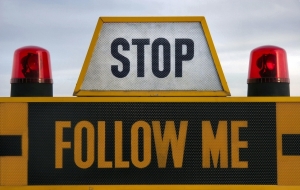30-Second Word Whoop: “Following”
An editor’s pet peeve — is it just me? or do I have followers? — is the use of the word “following” when “after” would suffice. It’s like using “occurred” in place of “happened” and don’t even get me started on its evil cousin “prior to.” Pretentious, right?
Some say you use “following” to express immediately after, as opposed to “after,” which could mean anytime after. It follows, then, on an invitation to say: “Join us for a reception following the show.”
But that’s precisely my point. Why not say “after the show?” Seems more friendly, like.
The “immediately after” argument is not so precise, anyway. “Following” is no more or less precise a time stamp than “after.” It only takes MORE time to type, read or say — which might make you late for a very important date.
“Following” and “after” are in no way synonyms. See the following list of exceptions. He phoned her the following day. They both mean what comes immediately after, yet you cannot substitute “after” in these examples.
Following my logic, if you can substitute “after” where you see “following,” you may be guilty of verbosity. Following her realization that she was insane, she extracted all four impacted wisdom teeth at age 40, which impacted her poorly. Possibly the worst sentence ever written. Don’t you wish you could have those four seconds back?
My trick: Think of the verb “to follow” and “pursue” at once — and apply the word “following” when something truly “ensues.” Just a guide, and a silly mnemonic, but we editors depend on those to stay on track.
I hereby issue the following decree: In these days of blogging and tweeting and following those who do — and who doesn’t prefer communication’s short form? — best take time for afterthought before committing to “following.”
30-Second Word Whoop: “Swipe”

Cashier carefully watches to make sure I swipe correctly, as opposed to swiping something from the store.
In the Eighties in my Detroit ‘hood, “swipe” meant only to steal. That was before possessions, like cars, were “jacked” — and we’re not talking the kind of jacking done to change a tire.
The most common “swipe” these days is what you do at the cashier on cue: Swipe your card NOW! Still often involves highway robbery, but we give authorization.
Interesting how the first dictionary definition of “swipe” involves physical violence:
1. a strong, sweeping blow, as with a cricket bat or golf club.
2. Informal: a swing of the arm in order to strike somebody; punch.
It also informally refers to “a critical or cutting remark.” Or, arcanely, to “a leverlike device for raising or lowering a weight, especially a bucket in a well; sweep.”
No doubt habitual swiping will lead to some sort of repetitive motion injury among consumers, as swiping machines are continually redesigned.
What pains me is the variety of machines out there, and the impatient checkout clerks who bark instructions at you a beat too soon when you are merely straining to read the screen.
Sometimes makes me want to take a swipe at someone.


